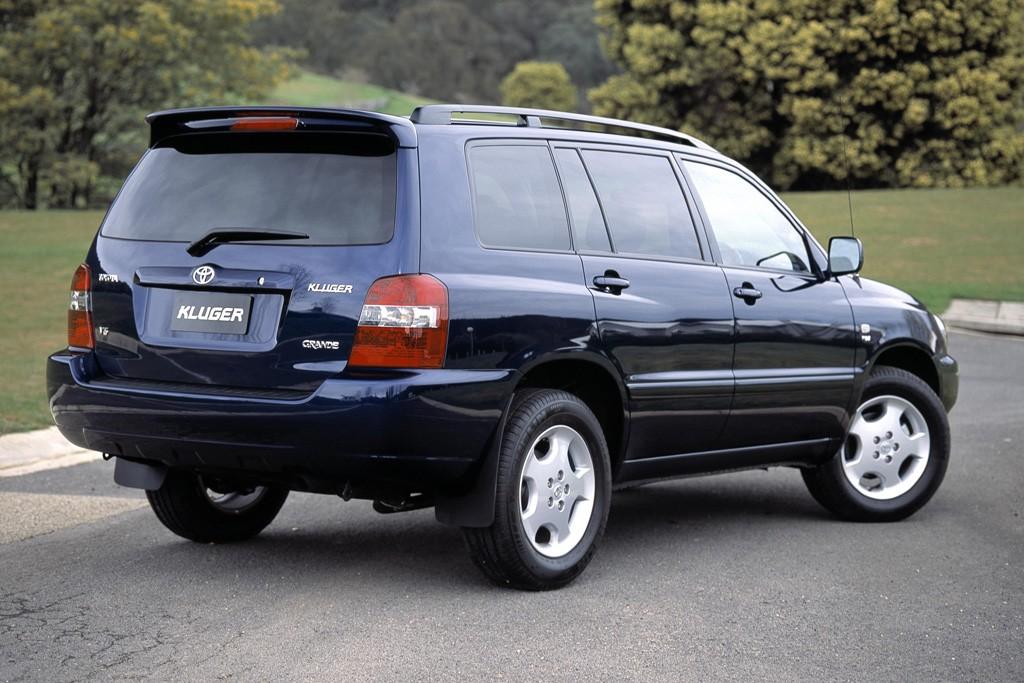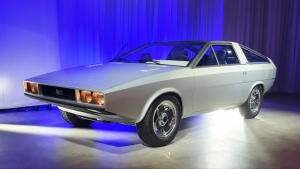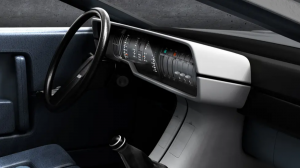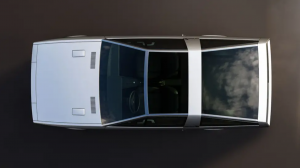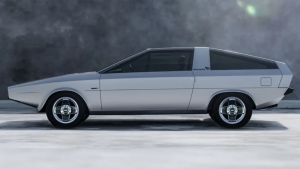Australia’s Road Safety Crisis: Falling Behind the World and What It Costs You
Australia’s commitment to road safety has traditionally been strong, with various initiatives aimed at reducing road fatalities and injuries. However, as technology advances, the gap between Australia’s safety standards for new vehicles and those of leading global benchmarks, notably the European Union (EU), is becoming increasingly evident. This disparity is highlighted by the slow adoption of Advanced Driver Assistance Systems (ADAS) technologies in Australian vehicles, technologies that are becoming mandatory in Europe and have proven potential to save lives on the road.
The Urgency for Advanced Safety Features
The EU’s proactive stance, mandating a suite of ADAS features for all new car models from July 2022 and for all new cars from July 2023, sets a precedent that Australia is currently trailing. Features like Intelligent Speed Assistance, lane-keeping assist, blind-spot detection sensors, and “black box” event recorders are now compulsory in Europe, underlining a commitment to leveraging technology for road safety.
Australia’s response, albeit cautious, is evolving. The Australian Design Rules (ADRs) are under review to potentially include these life-saving features, with automated emergency braking slated to become mandatory by 2026. This gradual inclusion of ADAS features marks a pivotal shift in Australia’s road safety strategy but also underscores the need for urgency given the technology’s potential impact on road safety outcomes.
Bridging the Safety Standards Gap
The stark difference in vehicle safety standards between Australia and the EU highlights an urgent need for Australia to align more closely with global best practices. As noted by Ingrid Johnston, CEO of the Australasian College of Road Safety, the delay in mandating new safety features means a prolonged period before these technologies become standard across the Australian vehicle fleet, given the country’s average vehicle age of around 10 years.
This delay has tangible consequences. For example, a NSW government trial suggested that speed assistance technology alone could reduce fatalities by 19 percent if universally adopted. The cost of integrating such technology, estimated by the European Commission to add $300 to $400 to the cost of new cars, is a small price to pay for the potential to save lives.
Challenges and Considerations for Local Implementation
The path to adopting these advanced safety features in Australia is not without its challenges. Infrastructure readiness, including comprehensive GPS coverage and accurate speed limit maps, is crucial for technologies like Intelligent Speed Assistance to be effective. Similarly, the effectiveness of lane-keeping assist systems is contingent on the quality of road markings, which may not be consistent across all Australian roads.
These considerations emphasize the need for a dual approach that combines regulatory changes with infrastructure improvements to support the effective deployment of ADAS technologies. As Stuart Newstead from the Monash Accident Research Centre points out, the evaluation of these technologies’ benefits in the local context is essential to ensure their effectiveness and suitability for Australian roads.
Consumer Guidance and International Alignment
The role of the Australian New Car Assessment Program (ANCAP) in providing safety ratings for new vehicles is crucial in guiding consumer choices towards safer cars. ANCAP’s assessments, which include evaluating non-mandatory safety features, play a vital role in raising awareness about vehicle safety standards and encouraging manufacturers to prioritize safety.
Furthermore, aligning Australia’s design standards with international standards, as pursued by the Federal Transport Department, ensures that Australian drivers have access to vehicles equipped with the latest safety technologies at competitive prices. This alignment, while respecting the unique aspects of the Australian market, is key to ensuring that safety innovations are not delayed in their introduction to the Australian market.
Moving Forward
The debate over the role of regulation versus market response, as highlighted by Tony Webber of the Federal Chamber of Automotive Industries, underscores the complexity of advancing vehicle safety standards. While the market has naturally evolved to include more safety features over time, regulatory intervention is necessary to ensure that all vehicles, regardless of price point, are equipped with essential safety technologies.
As Australia looks to reduce road fatalities and injuries, the integration of ADAS technologies into the Australian Design Rules represents a critical step forward. By learning from global best practices, especially those in the EU, and addressing the unique challenges of the Australian landscape, Australia can enhance the safety of its vehicle fleet, ultimately saving lives and reducing the burden of road trauma on society.
For more insights into vehicle safety and maintenance, explore our blog for articles like “The Importance of Using Genuine Parts In Crash Repairs” and “Worn Tyres Is Saving A Few Dollars Worth The Risk On The Road” at https://dynamicpaintnpanel.com.au/blog/.
Revealed: The Shocking Truth About Australia’s Ageing Car Fleet Putting Lives at Risk
The Crucial Link Between Vehicle Age, Repair Quality, and Road Safety
In an era where economic constraints are a stark reality for many, the trend of retaining older vehicles has become increasingly prevalent. This shift towards aging automobiles presents a significant challenge to road safety, given the absence of modern safety features in these vehicles. As a leading crash repair specialist, we understand the profound impact that both vehicle age and repair quality have on road safety. Through this lens, we explore the multifaceted relationship between these elements and offer insights into how drivers, repairers, and policymakers can navigate these challenges to ensure safer roads for everyone.
Understanding the Safety Implications of Older Vehicles
The average age of a vehicle in Australia now exceeds 10 years, with a sizable portion of the fleet significantly older. These vehicles, often devoid of recent advancements in safety technology, place their occupants at a higher risk during road incidents. From lane departure warnings to autonomous emergency braking, the absence of these innovations in older models underscores a growing digital divide in vehicle safety. This divide not only compromises the safety of individuals but also poses broader risks to public road safety.
The Role of Repair Practices in Ensuring Vehicle Safety
The safety of a vehicle post-accident is heavily contingent upon the quality of repairs undertaken. Incorrect or substandard repairs can severely undermine a vehicle’s structural integrity and the functionality of its safety systems. This issue is particularly critical for older vehicles, where sourcing appropriate replacement parts can be challenging, leading to potential compromises in repair quality.
As crash repair specialists, we emphasise the importance of adhering to stringent standards in vehicle repair. It is imperative to ensure that vehicles, especially those involved in accidents, are restored to their pre-accident condition, not just aesthetically but, more importantly, in terms of their safety capabilities. This commitment to excellence in repair work is vital in maintaining the safety of the vehicle on the road.
Bridging the Gap with Education and Policy
While technological advancements continue to enhance vehicle safety, economic realities often limit the ability of drivers to access newer, safer vehicles. It is here that the role of informed repair practices, alongside supportive policies and educational efforts, becomes paramount.
Incentives for Upgrading: To encourage the transition towards vehicles equipped with advanced safety features, we advocate for policy incentives such as rebates, tax breaks, or scrappage schemes. Such initiatives can significantly reduce the financial burden on individuals, making it more feasible to opt for newer, safer models.
Raising Awareness: Educating drivers about the importance of vehicle safety and the potential risks associated with older cars is crucial. Targeted educational campaigns can help illuminate the benefits of modern safety features, particularly for young or inexperienced drivers who are more likely to own older vehicles. Awareness can also extend to the significance of choosing reputable repair services that uphold the highest standards of safety and quality.
Public Transport and Road Design: Enhancing public transport options and investing in safer road designs can mitigate some of the risks associated with driving older vehicles. For regions with an aging vehicle fleet, such as South Australia, these measures are especially critical in reducing the overall road accidents.
The landscape of vehicle safety is ever-evolving, with new technologies continually raising the bar for road safety. However, the pervasive issue of older vehicles lacking these advancements, coupled with the critical need for high-quality repair practices, presents ongoing challenges. As a dedicated crash repairer, our role extends beyond mere repairs; it encompasses a commitment to ensuring that every vehicle we restore meets the highest standards of safety and performance.
In navigating the complexities of vehicle age, repair quality, and safety, a collective effort is required. By combining technological advancements, economic incentives, and educational efforts, we can work towards a future where road safety is not a privilege afforded by newness but a standard upheld across the board. Together, we can drive towards a safer future for all road users, ensuring that safety is not compromised by the age of a vehicle or the quality of its repairs.
How Overinflated Tyres Are Quietly Destroying Your Car’s Performance and Putting Your Life at Risk!
Motorists across the country are being warned about the dangers of driving with overinflated tyres, as the risk of accidents and blowouts increases significantly. Experts emphasise that excessive tyre pressure can lead to instability, affecting the vehicle’s handling, cornering ability, and braking performance.
How Overinflation Affects Handling
Even a slight deviation in tyre pressure, measured in psi (pounds per square inch), can have a profound impact on a vehicle’s handling, particularly on wet roads. Lower tyre pressures reduce load capacity and stability, while higher pressures provide greater capacity. Properly inflated tyres ensure even weight distribution across the tyre’s footprint, promoting stability and control.
However, underinflated tyres wear out unevenly, with the tread’s shoulder sections wearing faster than the centre due to inadequate support. When tyres encounter wet roads, factors such as tread depth, speed, and vehicle weight influence the risk of hydroplaning, where water reduces friction between tyres and the road, leading to loss of traction.
Preventing Accidents
In the event of hydroplaning, experts advise against slamming on the brakes. Instead, gradually release the gas pedal until steering control is regained. Properly inflated tyres maintain adequate pressure in the tread’s centre, preventing collapse and ensuring traction, especially in wet conditions. Driving with underinflated rear tyres is particularly challenging, requiring the driver to slow down to regain control.
Importance of Maintenance
While tyre manufacturers design tyres for optimal performance, neglecting tyre pressure maintenance compromises safety. Motorists are urged to adhere to recommended tyre pressures specified in the vehicle’s handbook or tyre placard. Regularly checking tyre pressure, ideally once a month, is crucial to prevent handling issues and excessive wear, particularly before embarking on long highway journeys.
Wear and Tear
Incorrect tyre pressure not only affects handling but also leads to excessive tyre wear and damage to sidewalls, increasing the risk of tyre bursts. Maintaining equal tyre pressure on all sides is essential for stability and adaptability on the road. Overinflated tyres are more susceptible to damage, deformation, reduced grip, and accelerated wear, especially in the centre.
Driving with overinflated tyres poses serious safety risks and can lead to accidents, blowouts, and excessive tyre wear. Regular maintenance and adherence to recommended tyre pressures are vital to ensure safe and efficient vehicle operation on the roads. Stay informed, stay safe.
Worn Tyres: Is Saving A Few Dollars Worth The Risk On The Road?
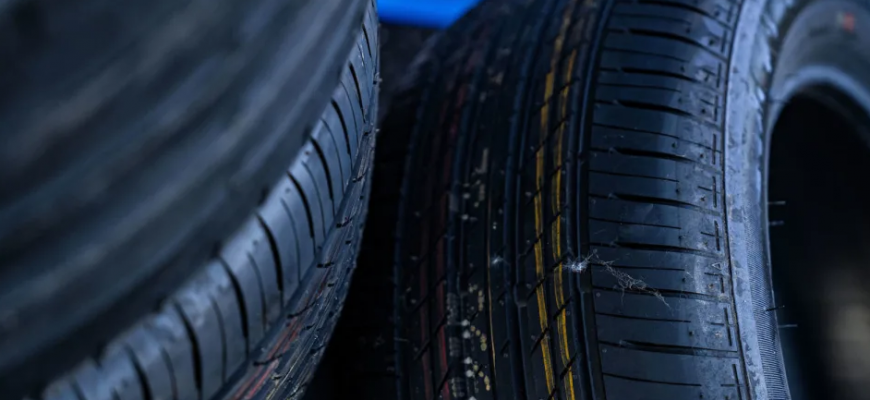
Drivers in Australia are being cautioned against the use of part-worn car tyres due to potential safety risks, particularly when the weather starts to get colder. While cheaper than new tyres, purchasing part-worn tyres, which have been removed from other vehicles but still have significant tread life, poses hazards that may not be immediately visible.
According to industry experts, a substantial number of part-worn tyres, estimated at 5.5 million annually, are sold in Australia. These tyres often originate from countries like Germany, where drivers replace tyres with adequate tread depth before reaching the legal limit, making them suitable for resale as part-worn tyres in Australia.
Part-Worn Tyres Overview
Part-worn tyres are essentially previously used tyres that still have usable tread life. They account for approximately 10% of all tyre sales in Australia. Imported part-worn tyres must meet specific regulations to be considered road-legal and safe for use.
Regulations in Australia
In Australia, regulations dictate that second-hand tyres must be in good condition, free from bulges in the sidewall, large cuts in the tread, or any visible structural damage. They should have a minimum tread depth of 2mm across the width and circumference and must be clearly marked as “part-worn” in uppercase letters at least 4mm in height on the sidewalls. Despite these regulations, some suppliers may not comply, and consumers are urged to ensure that any part-worn tyres they purchase meet these standards to avoid potential accidents.
Pros and Cons of Part-Worn Tyres
While part-worn tyres offer cost savings compared to new ones, they do not last as long and may require more frequent replacement. The initial savings may be offset by the shorter lifespan of part-worn tyres, making the long-term cost-effectiveness questionable. Additionally, part-worn tyres may have less grip, particularly in wet conditions, increasing the risk of accidents.
Furthermore, studies have shown that a significant portion of part-worn tyres sold in Australia do not comply with regulations, with some considered potentially dangerous due to hidden damage or incorrect repairs. Therefore, while part-worn tyres may seem like a budget-friendly option, the potential safety risks associated with them should not be overlooked.
Alternatives to Part-Worn Tyres
In addition to new and part-worn tyres, consumers in Australia have the option of remoulded or retreaded tyres. Remoulded tyres, if manufactured in compliance with regulations, can offer a cost-effective and environmentally friendly alternative to new tyres.
Ultimately, the decision to purchase part-worn tyres in Australia depends on individual preferences and risk tolerance. However, given the potential safety concerns and regulatory issues associated with these tyres, many experts recommend opting for new tyres or certified remoulded options to ensure maximum safety on the road.
Was this 1974 Korean/Italian Coupe the inspiration for Musk’s Cybertruck?

In a remarkable showcase of innovation meeting heritage, Hyundai Motor recently unveiled the restored Pony Coupe Concept at the inaugural Hyundai Reunion, an event that not only celebrated the brand’s storied past but also pointed towards its ambitious future direction. This event marked a significant moment in Hyundai’s history, demonstrating how far the company has evolved from its early days.
The Pony Coupe Concept, originally presented at the 1974 Turin Motor Show, has been brought back to life under Hyundai’s restoration project. This initiative is more than a nod to the company’s origins; it’s a testament to the daring spirit, passionate ambition, and visionary foresight that have propelled Hyundai from a fledgling automaker to a global powerhouse.
Euisun Chung, Executive Chair of Hyundai Motor Group, paid homage to his grandfather, Ju-young Chung, Hyundai’s founding chairman, for his pivotal role in Korea’s post-war economic rebuild and his dream of establishing Korea as a capable developer of its vehicles. This vision has clearly been realized, with Hyundai now standing as a testament to Korean innovation and automotive excellence.
As the automotive industry pivots toward electrification, Hyundai’s President and CEO, Jaehoon Chang, emphasized the company’s commitment to its foundational values. Through initiatives like the Hyundai Reunion and other heritage communication efforts, Hyundai aims to leverage its rich history as a unique catalyst for future innovations.
The event also served as a reflection on Hyundai’s beginnings, with legendary designer Giugiaro sharing insights into the development of the 1973 Pony Coupe Concept. Despite initial skepticism due to Hyundai’s inexperience at the time, Giugiaro was ultimately impressed by the passion and commitment of Hyundai’s engineers. Their eagerness to learn and adapt played a crucial role in the company’s evolution.
Luc Donckerwolke, President and Chief Creative Officer, alongside SangYup Lee, Executive Vice President and Head of Hyundai Design Center, highlighted the restoration of the Pony Coupe Concept as a milestone in Hyundai’s history. It symbolizes the company’s journey from its humble beginnings to its commitment to the future, serving as a legacy for future generations.
The Hyundai Reunion also underscored the importance of bridging past and present, with Sungwon Jee, Senior Vice President and Global Chief Marketing Officer, noting the significance of bringing together individuals who were instrumental in Hyundai’s early days with those leading the company into the future. This event not only launched the Hyundai Reunion platform but also showcased Hyundai’s enduring spirit of innovation, which continues to drive the brand forward.
Through the rebirth of the Pony Coupe Concept and the celebration of its heritage, Hyundai Motor Company reaffirms its dedication to innovation, its respect for its roots, and its vision for a future where it continues to push the boundaries of automotive technology and design.
The Art of Paintless Dent Repair
Preserving Perfection: The Art of Paintless Dent Repair (PDR)
When it comes to restoring your vehicle’s former glory after a dent, the method you choose can significantly impact its overall appearance and value. One technique stands out above the rest for its ability to retain the factory paint finish, ensuring your car maintains its original color and texture. Enter Paintless Dent Repair (PDR) – a revolutionary approach that sets itself apart from traditional methods.
The PDR Advantage: A Symphony of Preservation
Retaining Factory Paint Finish
The most remarkable feature of PDR lies in the fact that it will keep the vehicle’s factory paint finish untouched. Unlike conventional dent repair approaches that often necessitate repainting, PDR eliminates this step entirely. This means your car’s original coat of paint remains as pristine as the day it rolled off the assembly line.
Disruption-Free Repairs
Traditional dent repair methods involve sanding, filling, and repainting, disrupting the car’s original paint in the process. PDR, on the other hand, is a non-invasive technique. It doesn’t disturb the paint in any way, ensuring that the integrity of the original finish is maintained. No more worrying about color mismatches or uneven textures – PDR preserves the aesthetics of your vehicle seamlessly.
The Seamless Blend: Where Art Meets Science
Eliminating Colour Mismatches
One of the most common concerns with traditional repairs is the risk of colour discrepancies. PDR eliminates this worry entirely. By keeping the original paint intact, there are no variations in colour between the repaired area and the rest of the vehicle. The result? A flawless, seamless blend that leaves no evidence of the dent.
Texture Harmony
Texture variations can be a telltale sign of a repair job. With PDR, the texture of the repaired area seamlessly integrates with the surrounding surfaces. Say goodbye to visible blending lines or awkward textures – PDR ensures that your vehicle’s exterior maintains its uniform, factory-like finish.
Preservation Beyond Aesthetics: The Practical Side of PDR
Beyond the visual appeal, PDR offers practical advantages. The process is typically quicker than traditional methods, meaning less time without your vehicle. Additionally, PDR can be more cost-effective since it eliminates the need for extensive repainting and material costs associated with traditional repairs.
Choosing Excellence for Your Vehicle
In the world of dent repair, preserving the original beauty of your vehicle is paramount. Paintless Dent Repair emerges as the champion, offering a solution that goes beyond fixing dents – it preserves the essence of your car. From maintaining the factory paint finish to ensuring a seamless blend, PDR is a testament to the marriage of art and science in automotive restoration. Choose PDR for a repair that not only fixes dents but leaves your vehicle looking as though it never had one.
“Saluti” Magazine Feature!

DPP feautred in Saluti magazine!
We are beyond excited to share that our story was recently featured in the esteemed “Saluti” magazine, thanks to people like you who have supported us on this incredible journey.
We’ve received numerous inquiries from customers eager to get their hands on a copy of “Saluti” magazine. We’re thrilled to let you know that you can access the digital version of the magazine online.
Simply click on the link below to read the full feature and explore other inspiring stories from South Australian businesses run by Italian-Australians: HERE (Page 28 for the feature on DPP)
We love celebrating our connection with the local community and can’t wait for what’s ahead in the near future.
Once again, thank you for being an integral part of the Dynamic Paint N Panel family. Your support fuels our passion and drives us to deliver the best service possible.
The Magic of Paint Matching
|
|
|
The Importance of Crash Repair in Ensuring Your Safety on the Road
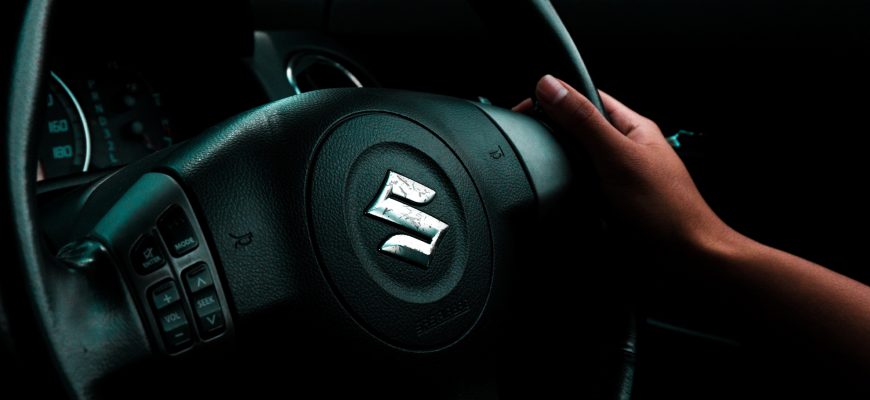
Crash repair plays a crucial role in ensuring your safety on the road. When your vehicle is involved in an accident, it is essential to have it repaired promptly and properly. The importance of crash repair cannot be overstated, as it not only restores the appearance of your vehicle but also addresses any structural damage that may compromise its safety. By repairing your vehicle after a crash, you can have peace of mind knowing that it is in optimal condition to protect you and your passengers in the event of another accident. Additionally, crash repair can also prevent further damage and deterioration, prolonging the lifespan of your vehicle. Therefore, it is vital to prioritize crash repair to maintain your safety on the road.
Importance of Crash Repair
Crash repair plays a crucial role in ensuring the safety of drivers on the road. When a vehicle is involved in an accident, it can sustain significant damage that compromises its structural integrity and performance. By promptly addressing crash repairs, drivers can restore their vehicles to their pre-accident condition and minimize the risk of further accidents or malfunctions. Additionally, crash repair also helps to maintain the value of the vehicle and prevent potential issues that may arise due to hidden damages. Therefore, it is essential for drivers to prioritize crash repair to guarantee the safety and longevity of their vehicles.
Ensuring Safety on the Road
Ensuring safety on the road is crucial for every driver. Well-maintained vehicles play a significant role in reducing the risk of accidents and ensuring the safety of both the driver and other road users. One important aspect of ensuring safety on the road is crash repair. When a vehicle is involved in a collision, it may sustain damage that can compromise its structural integrity and safety features. Prompt and proper crash repair is essential to restore the vehicle to its pre-accident condition and ensure that all safety systems are functioning correctly. By addressing and fixing any damage caused by a crash, drivers can have peace of mind knowing that their vehicle is safe to drive and will provide the protection they need in case of another accident. Therefore, it is crucial to prioritize crash repair to ensure the safety of yourself and others on the road.
Understanding Crash Repair
Definition of Crash Repair
Crash repair refers to the process of repairing a vehicle that has been involved in a collision or accident. It involves restoring the vehicle to its pre-accident condition, both in terms of functionality and appearance. Crash repair is a crucial aspect of ensuring your safety on the road, as it addresses any structural damage that may have occurred during the accident. By repairing the vehicle properly, you can ensure that it performs optimally and provides the necessary protection in the event of another collision. Additionally, crash repair also helps to maintain the value of your vehicle, as a well-maintained and repaired vehicle is more likely to retain its resale value. Therefore, it is essential to prioritize crash repair to safeguard your safety and investment.
Types of Crash Repairs
Crash repairs play a crucial role in maintaining the safety of vehicles on the road. When it comes to types of crash repairs, there are several key areas that need to be addressed. One type of crash repair is bodywork repair, which involves fixing any damage to the external structure of the vehicle. This includes repairing dents, scratches, and other cosmetic damage. Another important type of crash repair is mechanical repair, which focuses on fixing any damage to the vehicle’s mechanical components. This may include repairing or replacing parts such as the engine, transmission, or suspension system. Additionally, electrical repair is another essential aspect of crash repairs, as it involves fixing any issues with the vehicle’s electrical system, including the wiring and electronic components. Lastly, there is also the need for interior repair, which involves fixing any damage to the interior of the vehicle, such as the seats, dashboard, or carpeting. Overall, these different types of crash repairs are necessary to ensure the safety and functionality of vehicles on the road.
Role of Crash Repair in Vehicle Safety
Crash repair plays a crucial role in ensuring the safety of vehicles on the road. When a vehicle is involved in a crash or collision, it can sustain significant damage that affects its structural integrity and performance. The role of crash repair is to restore the vehicle to its pre-accident condition, addressing both visible and hidden damages. This includes repairing or replacing damaged body panels, aligning the frame, and restoring mechanical components. By undergoing proper crash repair, vehicles can regain their original safety features and performance capabilities, reducing the risk of further accidents and ensuring the safety of both the driver and passengers.
Common Types of Vehicle Damage
Body Damage
Body damage to your vehicle can occur as a result of a vehicle wreck or accident. It is important to address body damage promptly to ensure your safety on the road. When your vehicle has body damage, it may compromise the structural integrity and impact the overall performance of your vehicle. Additionally, body damage can affect the aesthetics of your vehicle, reducing its resale value. Therefore, it is crucial to seek professional crash repair services to restore your vehicle to its pre-accident condition. By repairing body damage, you can ensure the safety of yourself and others on the road while also maintaining the value of your vehicle.
Mechanical Damage
Mechanical damage refers to any damage that occurs to the mechanical components of a vehicle as a result of a crash or accident. This type of damage can include issues with the engine, transmission, suspension, steering, and brakes. It is crucial to address and repair mechanical damage promptly to ensure the safety of both the driver and other road users. Ignoring or neglecting mechanical damage can lead to further complications and potentially dangerous situations on the road. By promptly repairing mechanical damage, you can maintain the optimal functioning of your vehicle and minimize the risk of accidents and breakdowns.
Electrical Damage
Electrical damage in a vehicle can pose serious risks to both the driver and passengers. It is crucial to address any electrical issues promptly to ensure the safety of everyone on the road. When electrical components in a vehicle malfunction or fail, it can lead to a variety of problems, including loss of power, malfunctioning lights, and even potential fire hazards. In such situations, it is important to pack up and get driving safely to the nearest repair shop. Ignoring electrical damage can have detrimental consequences and increase the likelihood of accidents. Therefore, it is essential to prioritize electrical repairs and seek professional help to diagnose and fix any issues. By taking proactive measures and addressing electrical damage promptly, drivers can ensure their safety and the safety of others on the road.
The Impact of Untreated Vehicle Damage
Reduced Structural Integrity
Reduced structural integrity is a serious concern when it comes to crash repair. When a vehicle is involved in an accident, the impact can cause damage to the structural components of the car, such as the frame and body panels. If these components are not properly repaired, the structural integrity of the vehicle can be compromised. This can lead to a variety of safety issues, including decreased protection for occupants in the event of another accident. It is crucial to ensure that crash repairs are performed by qualified professionals who have the knowledge and expertise to restore the structural integrity of the vehicle.
Increased Risk of Accidents
When it comes to road safety, crash repair plays a crucial role in ensuring your well-being. One of the key aspects of crash repair is addressing the increased risk of accidents. Accidents can happen for various reasons, but one of the most common causes is the average wrong reason. When drivers fail to repair their vehicles after a collision, they are putting themselves and others at a higher risk of accidents. It is important to understand the significance of timely crash repair in reducing the chances of accidents and promoting road safety. By addressing the average wrong reason promptly and getting the necessary repairs done, drivers can ensure their safety on the road.
Compromised Safety Features
When it comes to ensuring your safety on the road, one of the most crucial aspects is the proper repair of any crash damage. Compromised safety features can pose a significant risk to both the driver and passengers. It is essential to address any damage resulting from a crash promptly and thoroughly. This includes repairing or replacing any damaged structural components, such as the frame or body panels, as well as ensuring that all safety systems, such as airbags and seat belts, are in proper working order. Neglecting to repair crash damage can lead to a range of safety issues, including reduced structural integrity, impaired vehicle handling, and increased risk of injury in the event of another accident. By prioritizing crash repair, you are taking a proactive step toward maintaining your safety on the road.
Benefits of Timely Crash Repair
Restored Vehicle Performance
Restored vehicle performance is crucial for ensuring your safety on the road. After a catastrophe or major accident, it is essential to prioritize car repair to avoid any potential hazards. Neglecting the repair of a damaged vehicle can lead to a dilemma where the compromised performance puts both the driver and passengers at risk. By addressing the necessary repairs promptly, you can restore the vehicle’s functionality and minimize any potential safety issues. It is important to understand that crash repair goes beyond just fixing visible damages; it involves a comprehensive assessment of the vehicle’s structural integrity and mechanical systems. When all necessary repairs are completed, you can have peace of mind knowing that your vehicle is restored to its optimal performance, ensuring your safety on the road.
Preservation of Vehicle Value
Preservation of Vehicle Value When it comes to ensuring the longevity and value of your vehicle, crash repair plays a crucial role. Not only does it restore the appearance of your vehicle, but it also addresses any underlying structural damage that may have occurred. This is particularly important when considering the impact on your vehicle’s resale value. Potential buyers are more likely to be attracted to a vehicle that has been properly repaired and maintained, as it gives them confidence in its overall condition and safety. Additionally, by promptly repairing any damage, you can prevent further deterioration and potentially costly repairs in the future. With the availability of new service areas, getting your vehicle repaired has become more convenient than ever before. Whether you need a minor dent repaired or major collision damage fixed, these new service areas offer professional and efficient repair services. Don’t wait until the damage worsens, take advantage of these new service areas and preserve the value of your vehicle.
Enhanced Safety on the Road
Ensuring your safety on the road is of utmost importance, and crash repair plays a vital role in achieving this. By addressing any damage to your vehicle promptly and effectively, you can enhance your safety while driving. Crash repair involves repairing or replacing damaged parts, ensuring that your vehicle is in optimal condition. This includes fixing structural damage, repairing safety features such as airbags, and restoring the overall integrity of your vehicle. How crash repair enhances safety on the road can be seen in the improved performance and functionality of your vehicle. With properly repaired and maintained components, your vehicle can better withstand the impact of collisions and provide better protection for you and your passengers. Additionally, crash repair also ensures that your vehicle meets safety standards and regulations, reducing the risk of accidents and injuries. Therefore, it is crucial to prioritize crash repair to enhance your safety on the road.
Choosing a Reliable Crash Repair Service
Certifications and Qualifications
Certifications and qualifications play a crucial role in the field of crash repair. When choosing an auto body shop, it is important to look for technicians who hold relevant certifications and qualifications. These certifications ensure that the technicians have undergone rigorous training and possess the necessary skills to perform high-quality repairs. Additionally, certified technicians are up-to-date with the latest industry standards and techniques, ensuring that your vehicle receives the best possible care. By entrusting your vehicle to certified technicians, you can have peace of mind knowing that they have the expertise to handle any repair job, no matter how complex. Moreover, certified technicians are often required to undergo regular training and education to maintain their certifications, which further enhances their knowledge and proficiency. Therefore, when selecting an auto body shop for crash repair, it is essential to prioritize certifications and qualifications to ensure the safety and reliability of your vehicle on the road.
Experience and Expertise
When it comes to crash repair, experience and expertise are crucial. You want to ensure that your vehicle is repaired correctly and safely after an accident. A skilled and knowledgeable repair technician will have the necessary experience to handle any type of collision damage and restore your vehicle to its pre-accident condition. By choosing a repair shop with a proven track record of success, you can have confidence in their ability to provide high-quality repairs. The importance of experience and expertise cannot be overstated when it comes to crash repair.
Customer Reviews and Testimonials
Customer reviews and testimonials are crucial when it comes to making a decision about crash repair services. At DPP Crash Repair, we take pride in the positive feedback we receive from our customers. Our team of highly skilled technicians is dedicated to providing top-notch repair services that ensure your safety on the road. With our state-of-the-art facilities and advanced equipment, we are able to handle all types of crash repairs, from minor dents to major structural damage. Our customers appreciate our attention to detail, professionalism, and quick turnaround times. We understand the importance of getting you back on the road as soon as possible, without compromising on quality. Don’t just take our word for it – read what our satisfied customers have to say about their experience with DPP Crash Repair.
Bringing Our Paintless Dent Removal Service to Adelaide
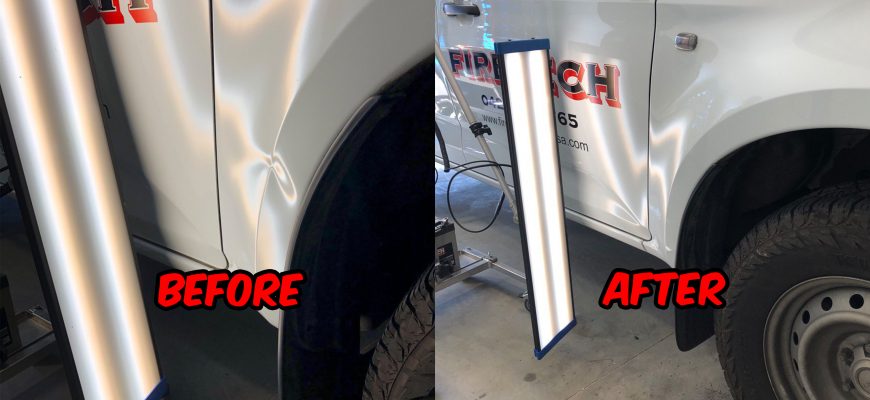
At DPP we know how frustrating those little shopping trolley dings and dents can be. They happen so quickly and easily and every time you look at your car your eye gets pulled towards that little dent. Fixing these little dents used to be a time-consuming, and sometimes expensive endeavour – but not anymore. Dynamic Paint N Panel is proud to bring our very own Paintless Dent Removal system to Adelaide.
Understanding Paintless Dent Removal:
Paintless Dent Removal is a specialised technique used to repair minor dents and dings on a vehicle’s body without the need for traditional bodywork and repainting. Unlike conventional methods, which often involve sanding, filling, and repainting, PDR preserves the original factory finish of the vehicle, making it a preferred choice for those who want a showroom finish without having to spend a packet.
How Paintless Dent Removal Works:
- Assessment and Access: Our Trained PDR technicians begin by assessing the dent’s size, location, and accessibility. This step determines whether PDR is suitable for the specific dent. Accessibility to the backside of the dent is essential for the technique to work effectively.
- Tools and Techniques: PDR utilises an array of specialised tools designed for precision. Technicians gently massage the dent from the backside, applying controlled pressure to reshape the metal gradually. This technique requires skill and finesse to avoid overcorrection or damage to the surrounding area.
- Light and Visual Inspection: A reflective light source or light board is used to visualize the damaged area’s contours and shadows. This technique helps technicians accurately plan their approach and monitor progress throughout the repair process.
- Gradual Restoration: The dent is meticulously massaged back to its original shape through a series of careful adjustments and manipulations. The goal is to achieve a seamless, smooth surface that blends seamlessly with the rest of the car’s body.
Benefits of Paintless Dent Removal:
- Preservation of Original Finish: PDR is a game-changer in the automotive repair industry due to its ability to maintain the car’s original paint finish. This preservation is essential for maintaining the vehicle’s aesthetic appeal and value.
- Cost-Effective: Traditional dent repair methods often involve extensive labour and repainting costs. PDR is a cost-effective alternative, as it requires fewer materials and reduces labour time, making it more budget-friendly for car owners.
- Time Efficiency: PDR is notably quicker than conventional methods, with many repairs taking only a few hours to complete. This convenience minimises the disruption to your daily routine and gets the vehicle back on the road sooner. In many cases we can come to you and fix the dent at your home or office.
- Environmentally Friendly: PDR generates minimal waste compared to traditional repairs that involve sanding, filling, and repainting. This eco-friendly aspect contributes to a greener automotive industry.
- Retained Resale Value: Vehicles with a history of PDR tend to retain their resale value better, as the original finish remains intact. Potential buyers are more likely to be attracted to a car that hasn’t undergone extensive repainting.
Paintless Dent Removal is more than a mere repair technique; it’s a testament to the innovation and progress in the automotive industry. With its intricate mechanics and impressive benefits, PDR has become a preferred choice for car owners seeking efficient, cost-effective, and eco-friendly dent repair solutions. This technique not only restores the vehicle’s aesthetics but also reflects a commitment to preserving both the vehicle’s beauty and its long-term value.
Don’t let those dents steal your car’s shine. Embrace the power of PDR and experience a cost-effective, time-efficient solution that maintains your car’s aesthetics and resale value. Contact our DPP today to transform your car back to its showroom glory! Say goodbye to dents and hello to a stunning ride. Get a free assessment now!
PDR is perfect for small dents where the paintwork hasn’t been damaged
- Cricket ball dent
- Football dents
- Shopping trolley dents
- Door dents
- Any dents that haven’t scratched/damaged the original paintwork.



